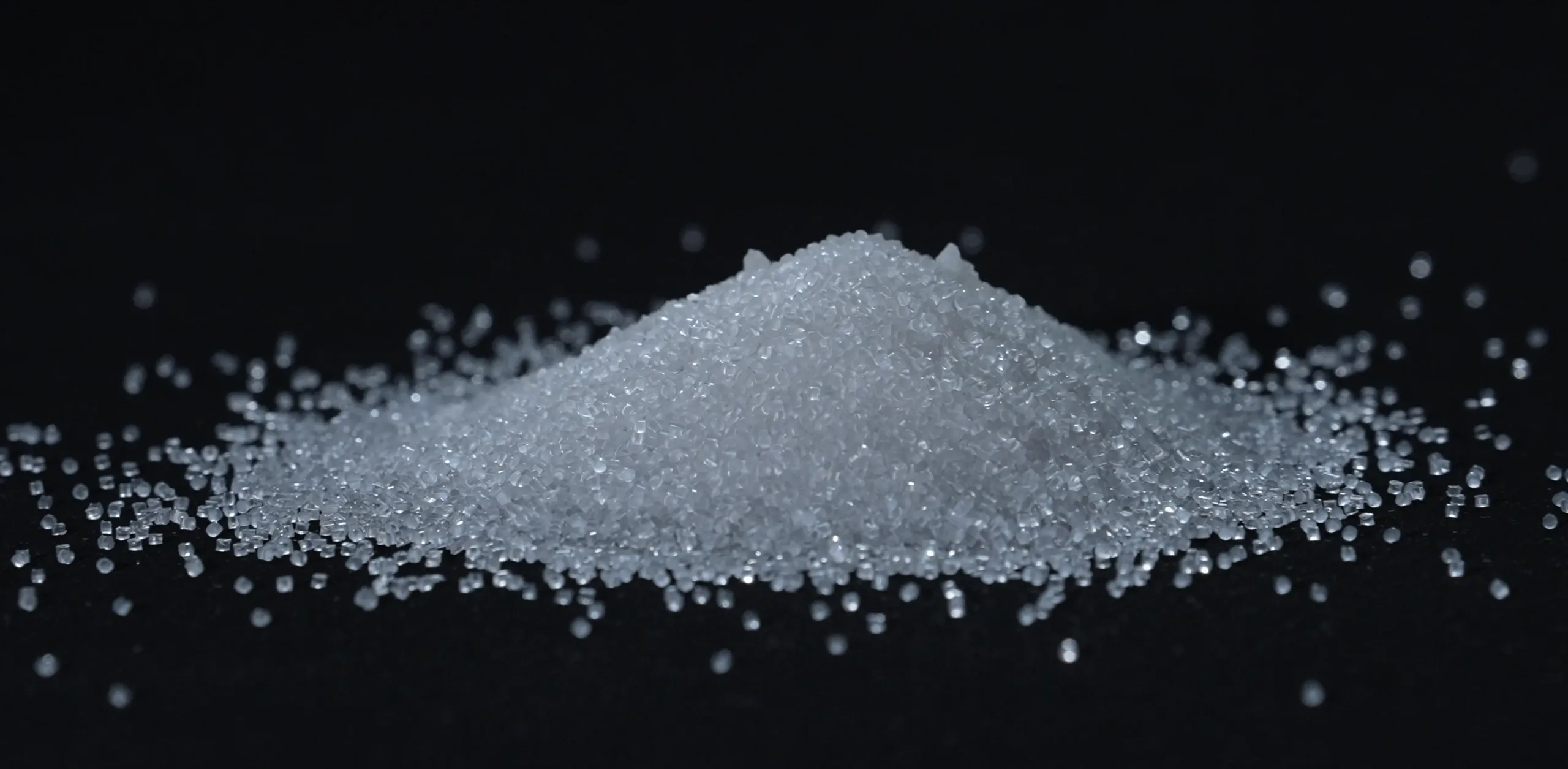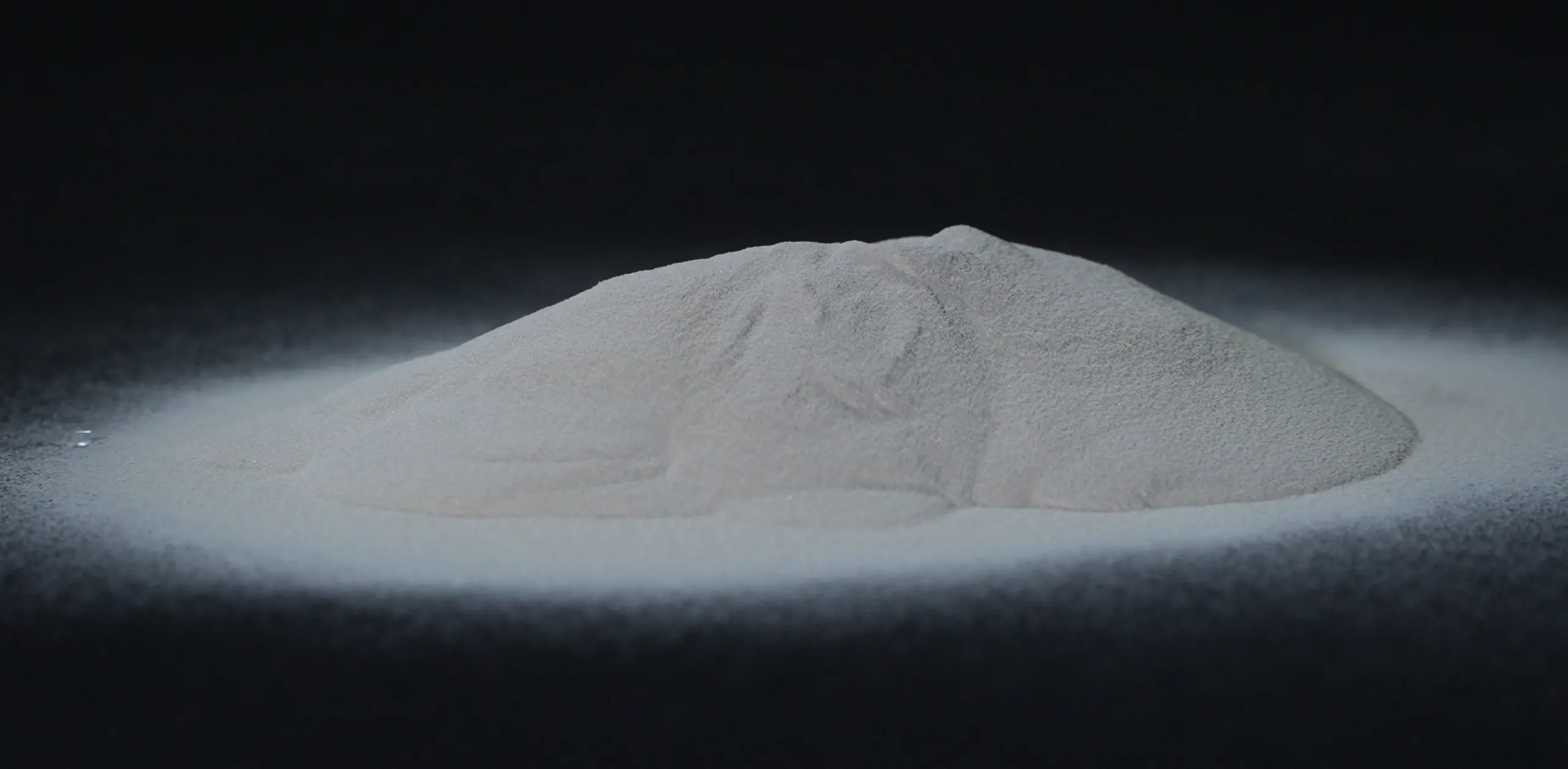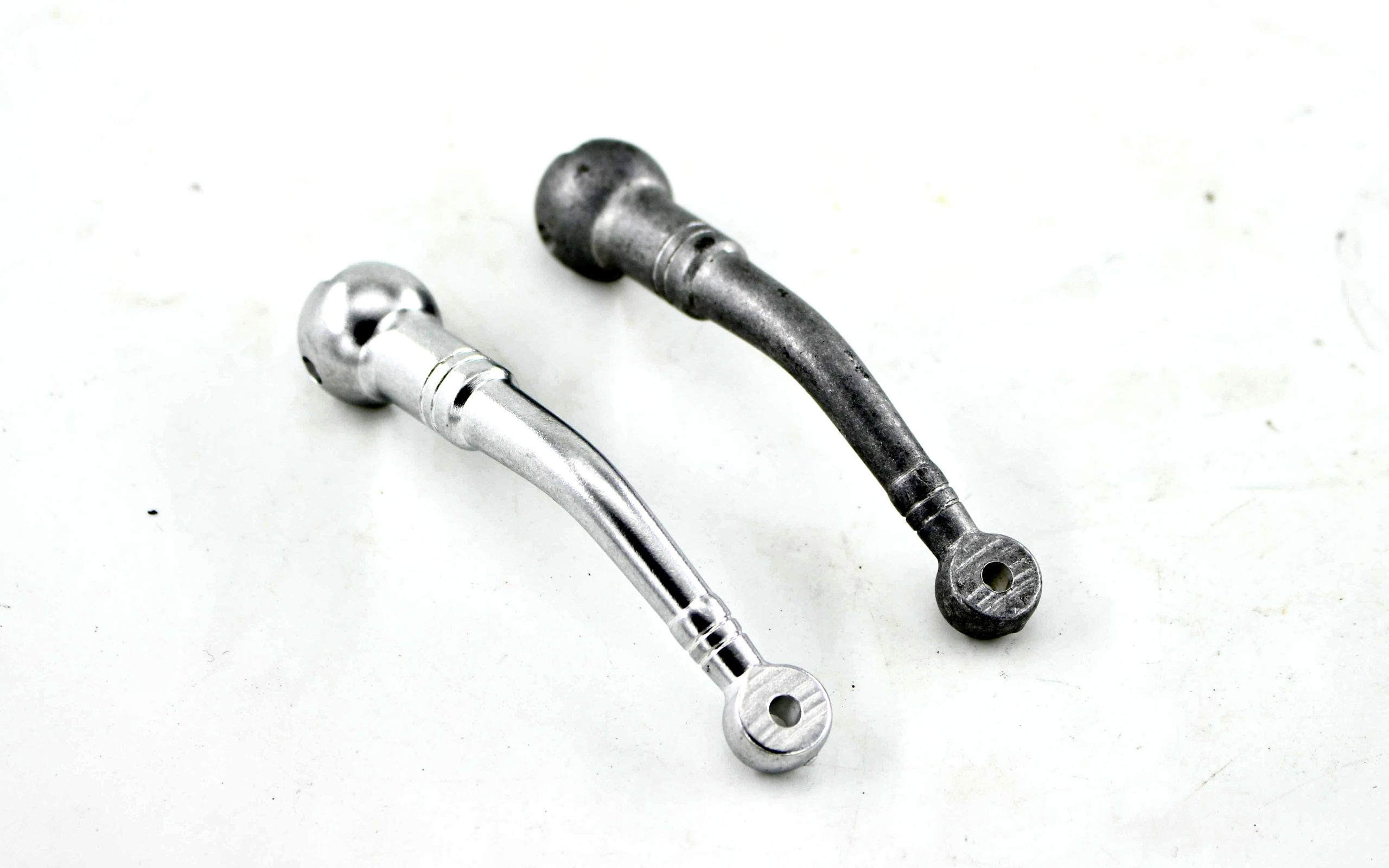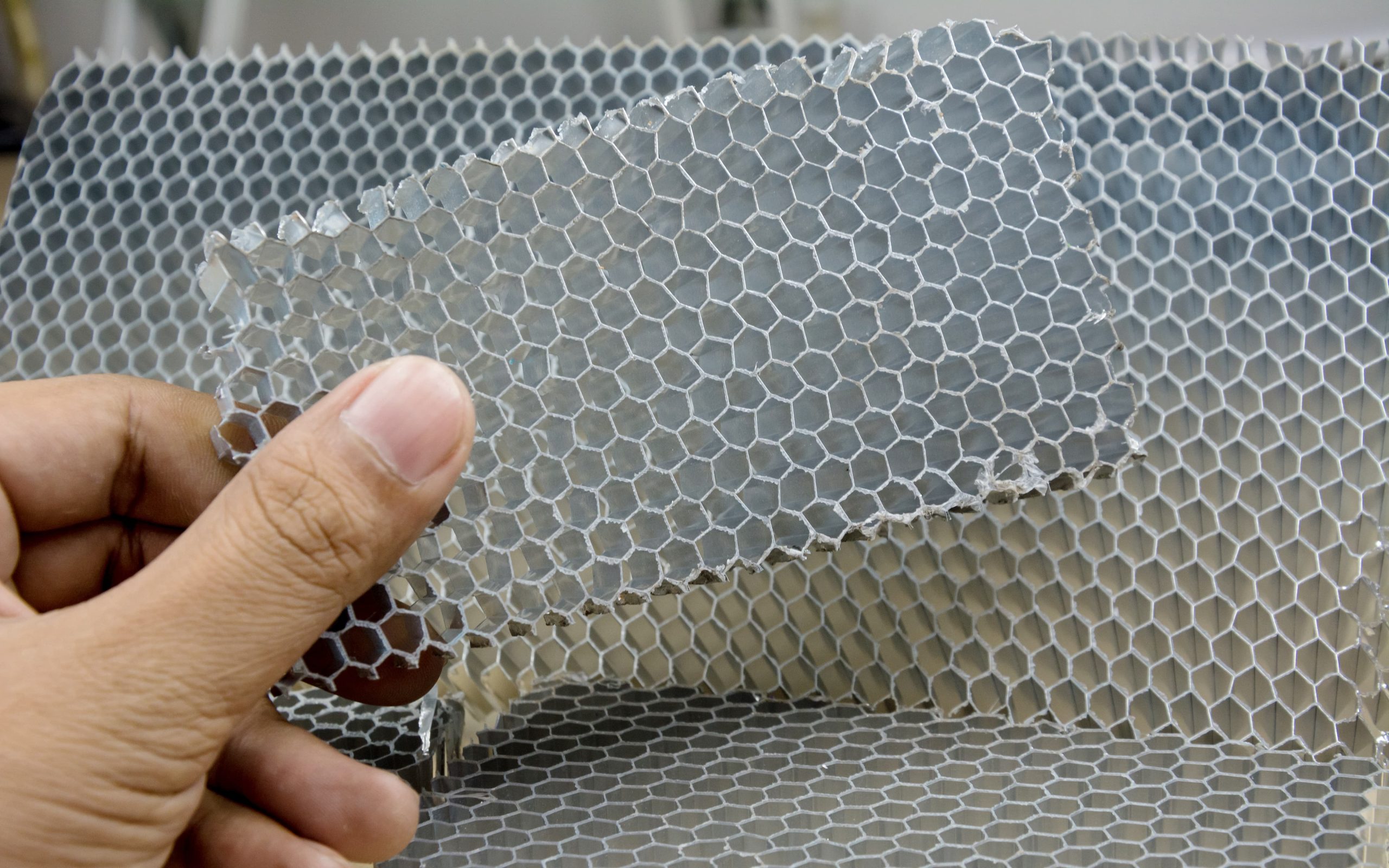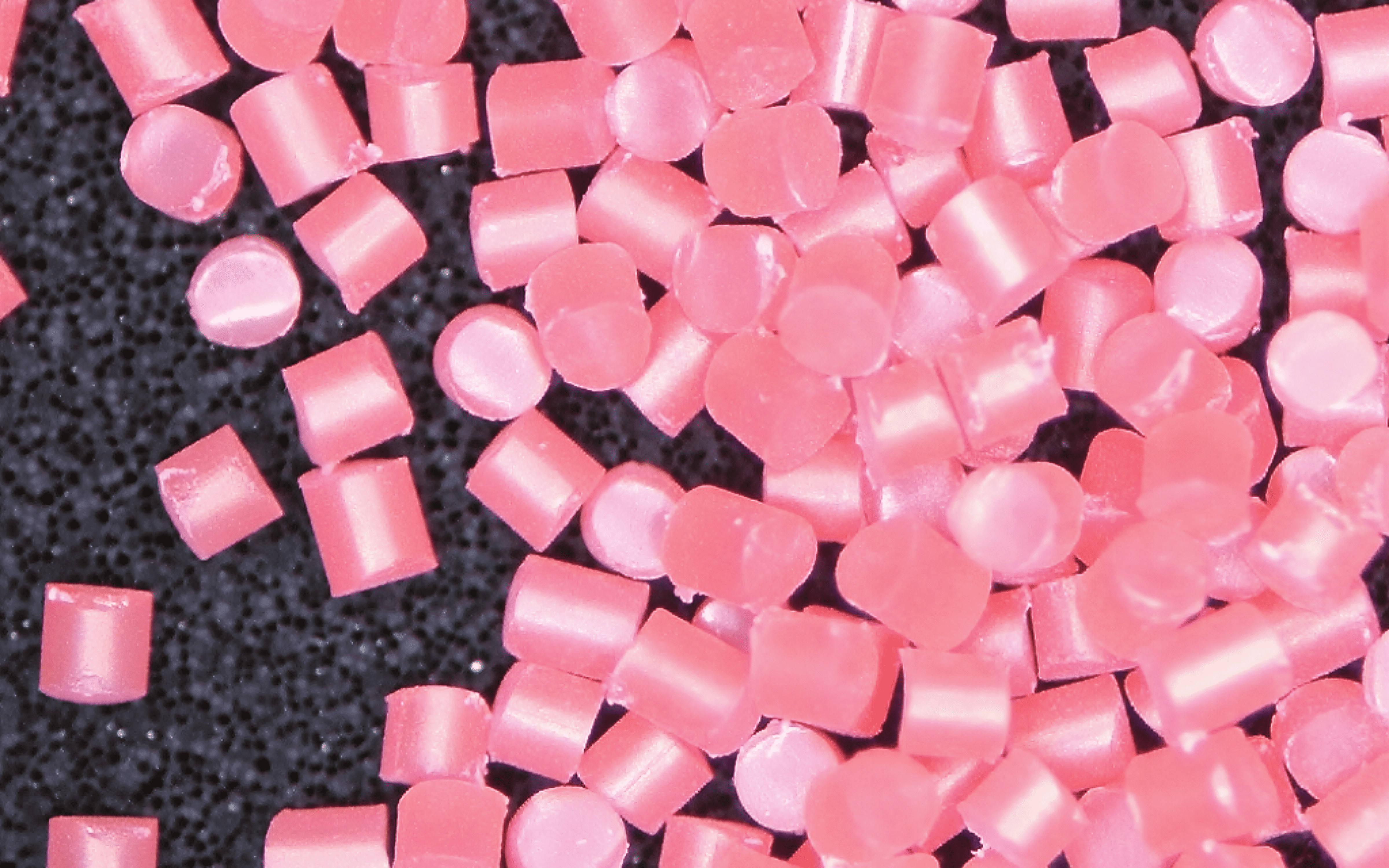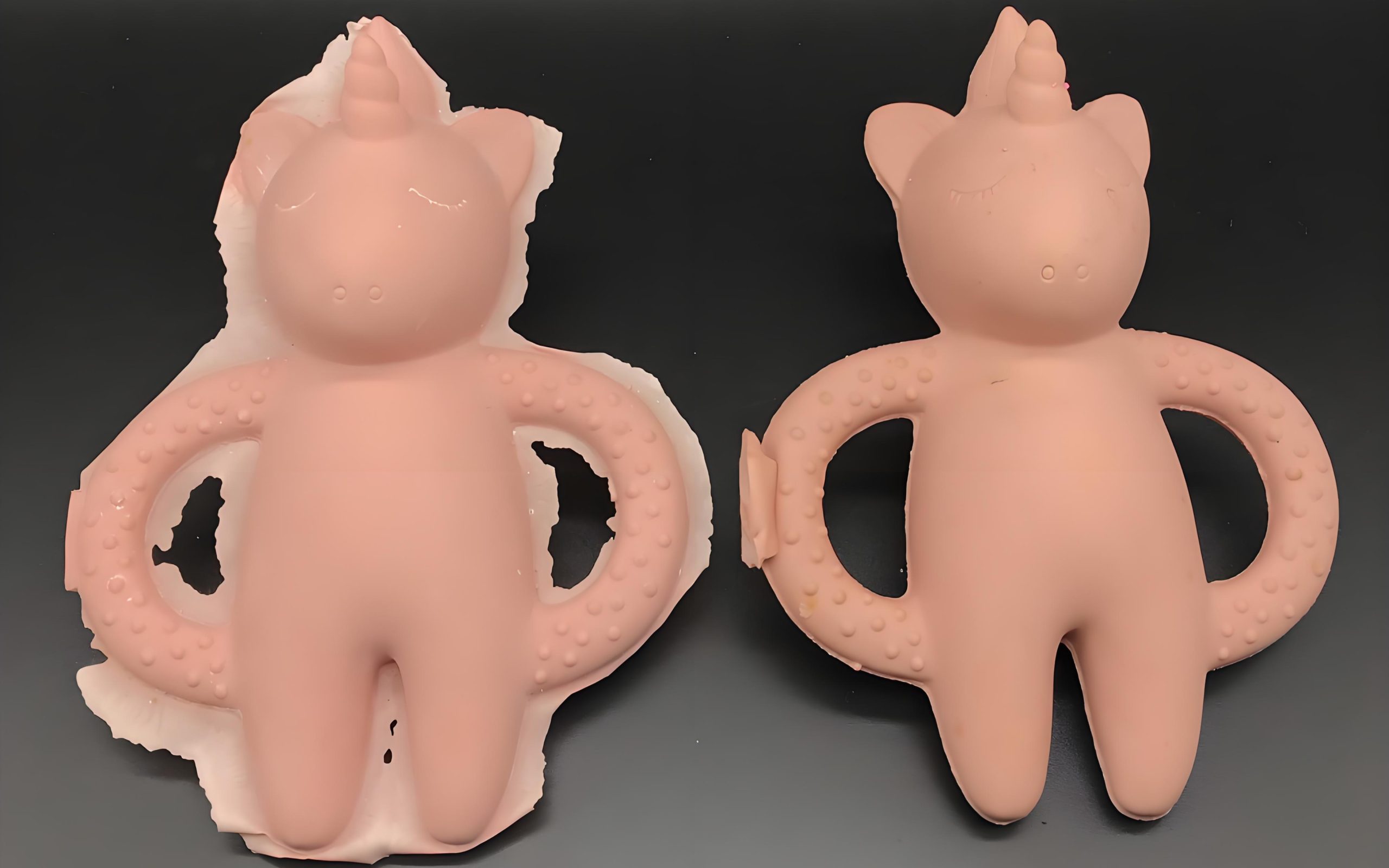Qu'est-ce qu'une bille d'ébarbage en polystyrène ?
12 septembre 2024
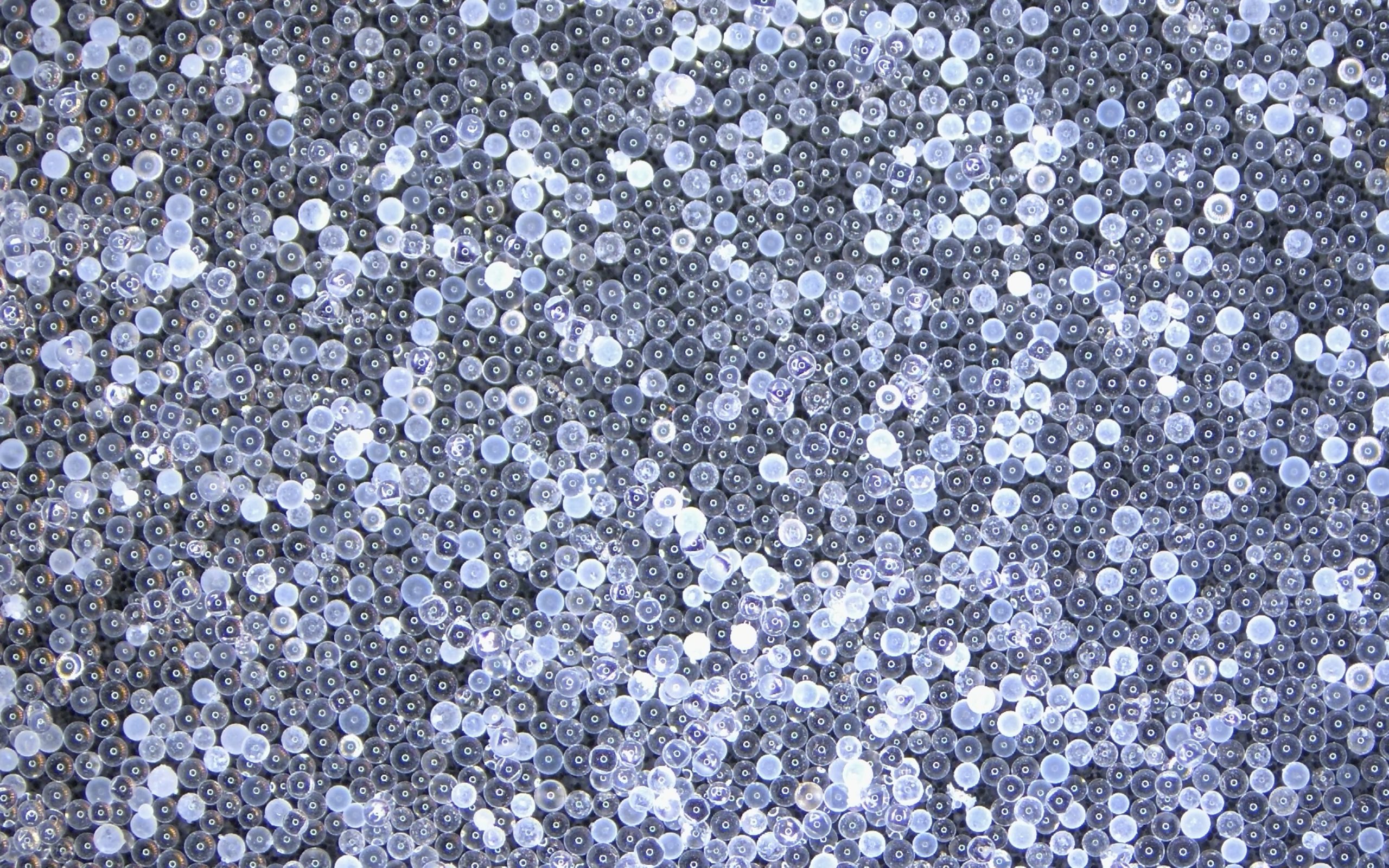
Avec le développement rapide de l'industrie moderne, la fabrication de précision est devenue la clé de la recherche d'une excellente qualité dans divers domaines. Dans le processus de production des pièces de précision, l'ébavurage est un élément crucial qui affecte directement les performances, la fiabilité et la qualité esthétique du produit. Les méthodes traditionnelles d'ébavurage, telles que les méthodes manuelles, les vibrations, le chauffage, le laminage, etc., présentent souvent de nombreuses limitations, telles qu'une faible efficacité, des dommages faciles aux pièces et la pollution de l'environnement. Ces dernières années, les billes d'ébavurage en polystyrène, nouveau type de support d'ébavurage, sont apparues dans le domaine de l'usinage de précision avec leurs avantages uniques, apportant de nouvelles idées et méthodes pour résoudre le problème de l'ébavurage.
Qu'est-ce qu'une bille d'ébarbage en polystyrène ?
Cliquez sur ici pour afficher la page du produit
Propriétés physiques
- Couleur : Blanc transparent, pureté et beauté.
- Forme : Les particules sphériques, d'une taille comprise entre 0,2 et 1,2 mm, de taille uniforme, peuvent répondre aux besoins d'ébavurage de différentes pièces de précision.
- Volume : La densité est de 0,93-0,96 g/cm.3Il est relativement léger et facile à utiliser et à transporter. Il peut également être réparti facilement et uniformément sur la surface traitée lors de l'application, avec une large couverture, ce qui réduit efficacement le temps de travail et la consommation d'énergie pendant le processus de nettoyage.
- Résistivité de surface : Moins de 109 ohms, avec certaines propriétés antistatiques.
- Absorption d'eau : Faible, pas de déformation ou de dégradation des performances du matériau due à l'absorption d'eau. Cette propriété en fait un matériau adapté aux applications nécessitant une résistance à l'humidité ou aux environnements humides, telles que l'emballage et la protection de composants électroniques et d'appareils médicaux.
- Thermoplasticité : Sa température de déformation à chaud est de 205°C et son point de fusion est de 220°. Il présente une résistance élevée à la chaleur et peut fonctionner de manière stable dans une certaine plage de températures. Dans cette plage de températures, il peut être plastifié par chauffage puis solidifié en un produit de forme fixe par refroidissement. Cette propriété en fait un matériau idéal, largement utilisé dans les processus de fabrication tels que le moulage par injection et le moulage par extrusion.
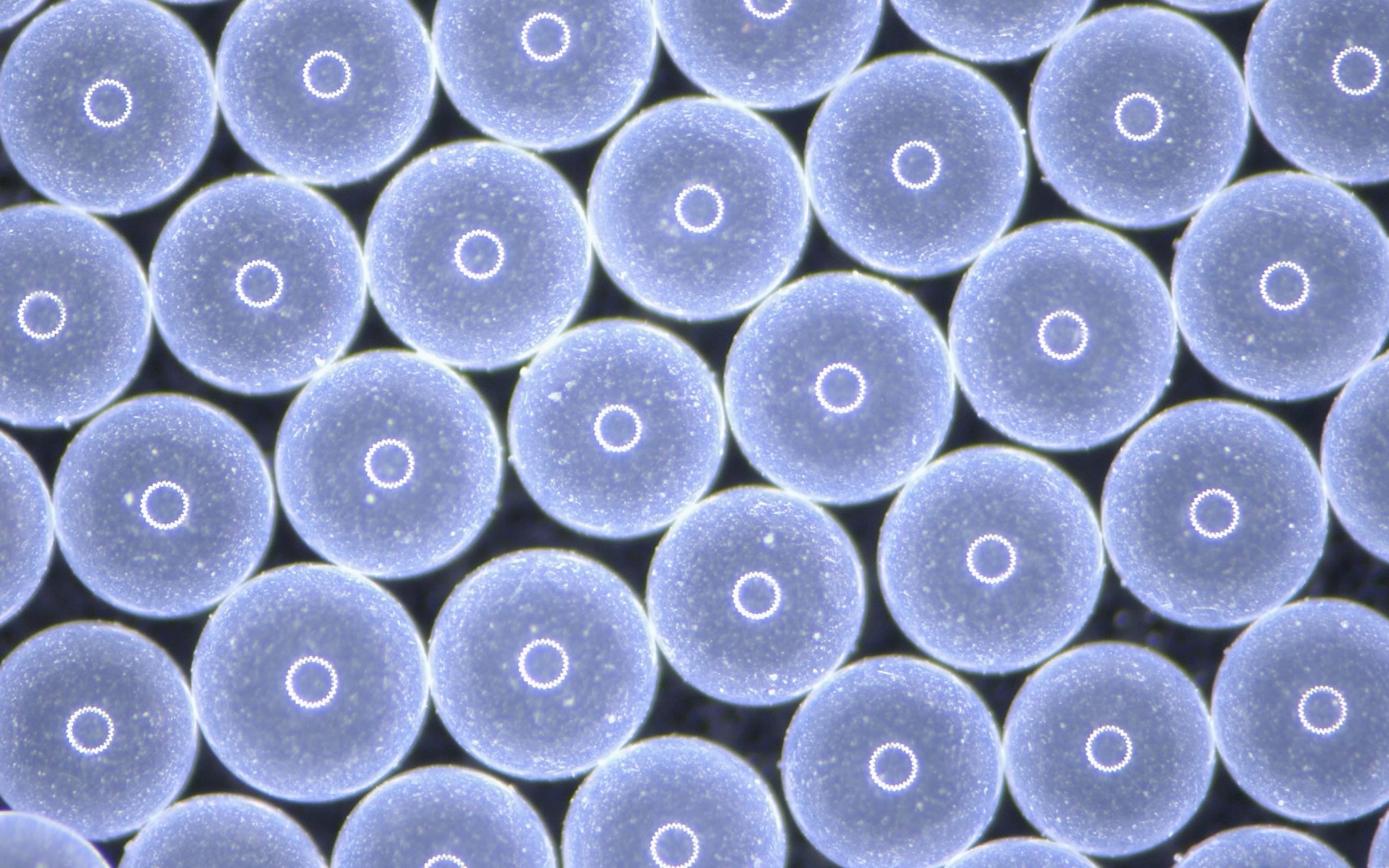
Sphère transparente
Propriétés chimiques
- Composant principal : Polystyrène aux propriétés chimiques stables. Il ne réagit pas facilement à la plupart des produits chimiques. Il présente une bonne résistance aux acides, aux alcalis et à la corrosion chimique, mais il est sensible à certains solvants organiques tels que le benzène et le toluène, et peut gonfler ou même se dissoudre.
- Odeur : Inodore et insipide, il n'a pas d'effets néfastes sur l'environnement de travail.
Avantages
Une certaine solidité et stabilité
La force de traction est de 2750, la contrainte de flexion est de 21000, et le retrait de moulage est compris entre 1,2 et 1,5. Ces caractéristiques indiquent qu'il possède une certaine résistance et stabilité, et qu'il n'est pas facile de le déformer ou de l'endommager pendant le processus d'ébarbage. Il peut garantir une utilisation à long terme, réduire la fréquence de changement du milieu et économiser des coûts.
Particules sphériques uniformes
La taille uniforme peut entrer en contact avec la surface de la pièce plus uniformément, améliorer l'effet et l'efficacité de l'ébavurage et, par rapport aux médias de forme irrégulière, les particules sphériques sont soumises à des contraintes plus uniformes pendant le mouvement et peuvent s'adapter à des pièces de précision de différentes formes.
Non toxique, inoffensif et sans poussière
Les billes d'ébarbage en polystyrène sont inodores, insipides et non toxiques. En outre, leur densité volumique est faible et il n'est pas facile de soulever de la poussière pendant le fonctionnement, ce qui permet de maintenir l'environnement de travail propre. Cet aspect est particulièrement important pour le traitement des pièces de précision, car si la poussière pénètre à l'intérieur de la pièce, elle risque d'affecter ses performances et sa fiabilité. Dans le même temps, un environnement de travail propre est également bénéfique pour la santé des travailleurs, réduisant les problèmes de santé tels que les maladies respiratoires causées par l'inhalation de poussière.
Aucun résidu
Sa faible teneur en fer garantit qu'aucune impureté n'est introduite pendant le processus d'ébavurage. La propriété antistatique permet de réduire la possibilité que les impuretés soient attirées par l'électricité statique. Il est particulièrement adapté aux domaines électriques et électroniques qui exigent des performances d'isolation élevées, et peut éviter les défaillances ou les interférences causées par l'électricité statique au cours du processus d'ébavurage. Cet avantage garantit la performance et la fiabilité des composants de précision.
Pas d'endommagement de la couche de galvanoplastie
Les billes d'ébarbage en polystyrène ont une température de déformation thermique et un point de fusion élevés, et n'endommageront pas la couche de galvanoplastie en raison des changements de température au cours du processus d'ébarbage. En même temps, ses propriétés chimiques stables ne réagissent pas avec la couche de galvanoplastie. Cela convient parfaitement à certaines pièces présentant des surfaces galvanisées, car la couche de galvanoplastie a généralement un effet protecteur et décoratif. Si elle est endommagée, cela n'affectera pas seulement l'apparence de la pièce, mais pourra également réduire sa résistance à la corrosion et d'autres propriétés.
Différences par rapport aux produits d'ébavurage en nylon polyamide
Aspects physiques
- Forme : Les billes d'ébavurage en polystyrène sont sphériques, tandis que les ébavureurs en nylon polyamide sont cylindriques ou de forme irrégulière. Lorsque la sphère entre en contact avec la pièce, il s'agit d'un contact ponctuel. Grâce à sa forme spéciale, elle peut rouler et ajuster sa position avec plus de souplesse pendant le processus d'ébavurage afin de s'adapter aux surfaces des pièces de différentes formes. De cette manière, la force d'ébavurage est relativement uniforme et il n'est pas facile de former un surbroyage local sur la surface de la pièce. Le support cylindrique est relativement régulier pendant le mouvement, généralement en roulant ou en glissant dans une direction spécifique. Cette caractéristique de mouvement peut entraîner une couverture relativement étroite de l'ébavurage, et pour certaines pièces de forme complexe, toutes les bavures peuvent ne pas être complètement éliminées.
- Densité : La densité volumique des billes d'ébarbage en polystyrène est de 0,93-0,96 g/cm.3La densité du polystyrène est relativement plus légère, tandis que celle du nylon polyamide est généralement plus élevée. La densité plus faible rend les billes d'ébavurage en polystyrène plus légères et plus faciles à contrôler pendant l'opération.
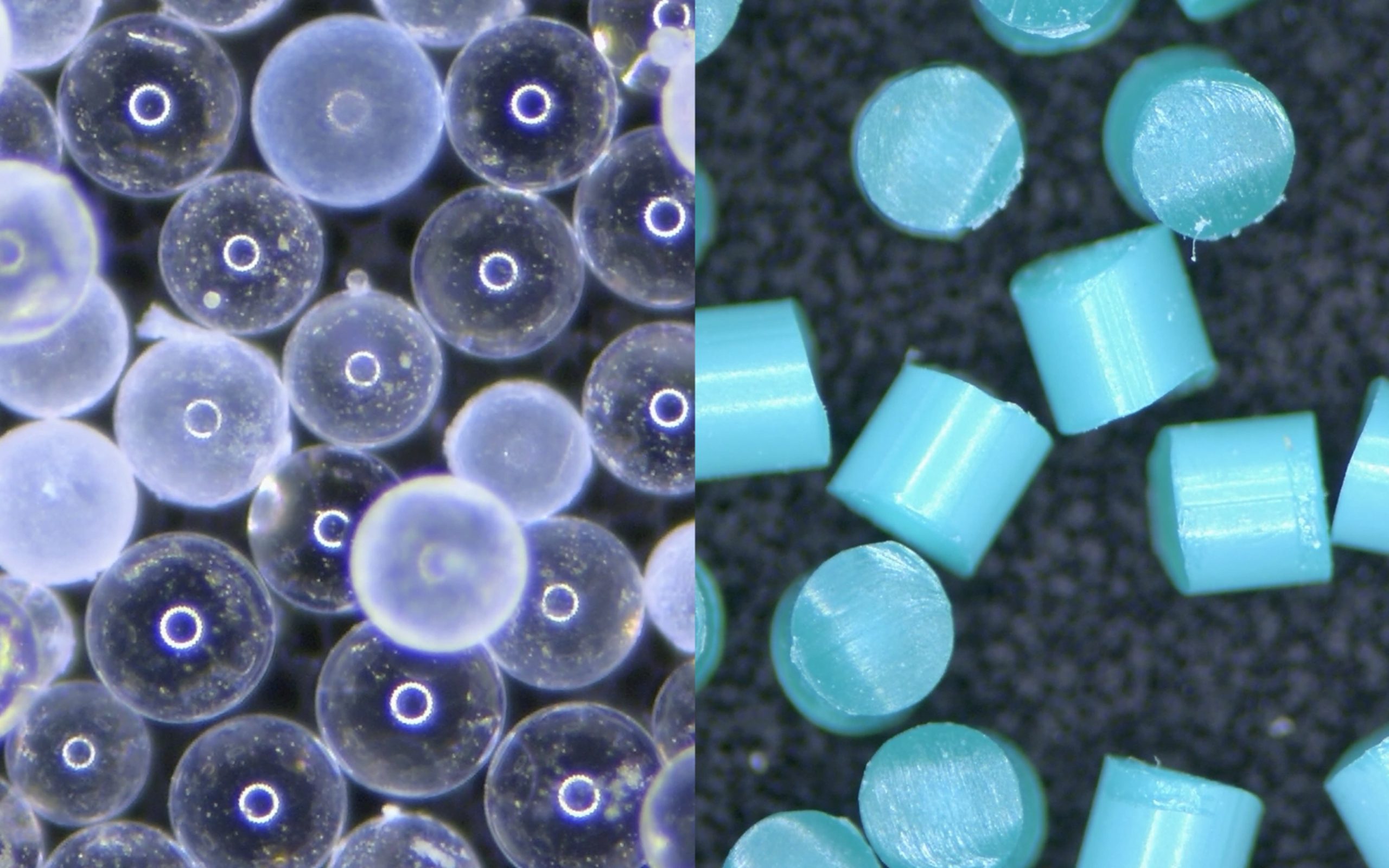
Des formes différentes produisent des effets différents
Performance
- Effet de déflachage : Les billes d'ébavurage en polystyrène n'endommagent pas la couche de galvanoplastie lors de l'ébavurage et ne laissent aucun résidu. Elles conviennent aux pièces de précision exigeant une grande précision, tandis que les produits d'ébavurage en nylon polyamide peuvent devoir être ajustés et optimisés pour certaines pièces spéciales et complexes.
- Champ d'application : Les billes d'ébavurage en polystyrène, de forme sphérique, sont uniformément sollicitées pendant le mouvement, ce qui permet de réduire les rayures et les dommages à la surface de la pièce. Ils sont particulièrement adaptés aux pièces présentant des exigences élevées en matière de qualité de surface, telles que les pièces plastiques de précision et les surfaces de galvanoplastie. Les ébavureurs en nylon polyamide sont principalement cylindriques, et le contact avec la pièce est généralement un contact linéaire ou un contact de surface. Ce mode de contact peut produire une plus grande friction sur la surface de la pièce pendant l'ébavurage et convient mieux aux pièces telles que les métaux et les plastiques qui requièrent une grande résistance à l'usure.
Champ d'application
Composants électroniques
- Contexte : Les composants électroniques, tels que les puces et les microprocesseurs, sont soumis à des exigences extrêmement élevées en matière de propreté et de précision dimensionnelle au cours du processus de production. Les dispositifs électroniques devenant de plus en plus miniaturisés, toute bavure résiduelle ou impureté minuscule peut entraîner une défaillance du composant ou affecter les performances électriques. Les méthodes traditionnelles d'ébavurage mécanique ne peuvent souvent pas répondre à ces exigences de haute précision, alors que les billes d'ébavurage en polystyrène sont très efficaces pour nettoyer les boîtiers de composants électroniques et les composants internes. Leur conception sphérique non abrasive garantit que la couche superficielle du composant ne sera pas endommagée et ne causera pas de problèmes d'électricité statique lors de l'élimination des bavures.
- Application : Bosch, un célèbre fabricant allemand de produits électroniques, utilise cette technologie pour ébavurer des connecteurs de précision. Les résultats montrent que le taux de défectuosité des composants des connecteurs a baissé d'environ 15%, que l'efficacité de la production a augmenté de 20%, que le taux de qualification de la production des composants s'est considérablement amélioré et que les défaillances électriques causées par des problèmes de bavures ont été réduites.
Pièces de précision en caoutchouc
- Contexte : Dans les industries telles que l'automobile et l'équipement médical, les pièces de précision en caoutchouc doivent conserver un degré élevé de finition de surface et de précision dimensionnelle. Les méthodes traditionnelles d'ébavurage peuvent endommager la surface du caoutchouc ou provoquer une usure excessive, alors que les billes d'ébavurage en polystyrène peuvent éviter cela grâce à leurs propriétés de matériau souple.
- Application : Les billes de polystyrène sont largement utilisées dans les lignes de production de constructeurs automobiles tels que Toyota. Toyota a introduit la technologie d'ébavurage du polystyrène dans le processus de fabrication des joints de moteur automobile, ce qui a permis de réduire le taux d'apparition des défauts de surface des joints en caoutchouc : les problèmes de bavures ont été réduits de 30%. Comme les billes ne restent pas sur les joints tout en assurant l'étanchéité, les coûts de production de Toyota sont efficacement contrôlés.
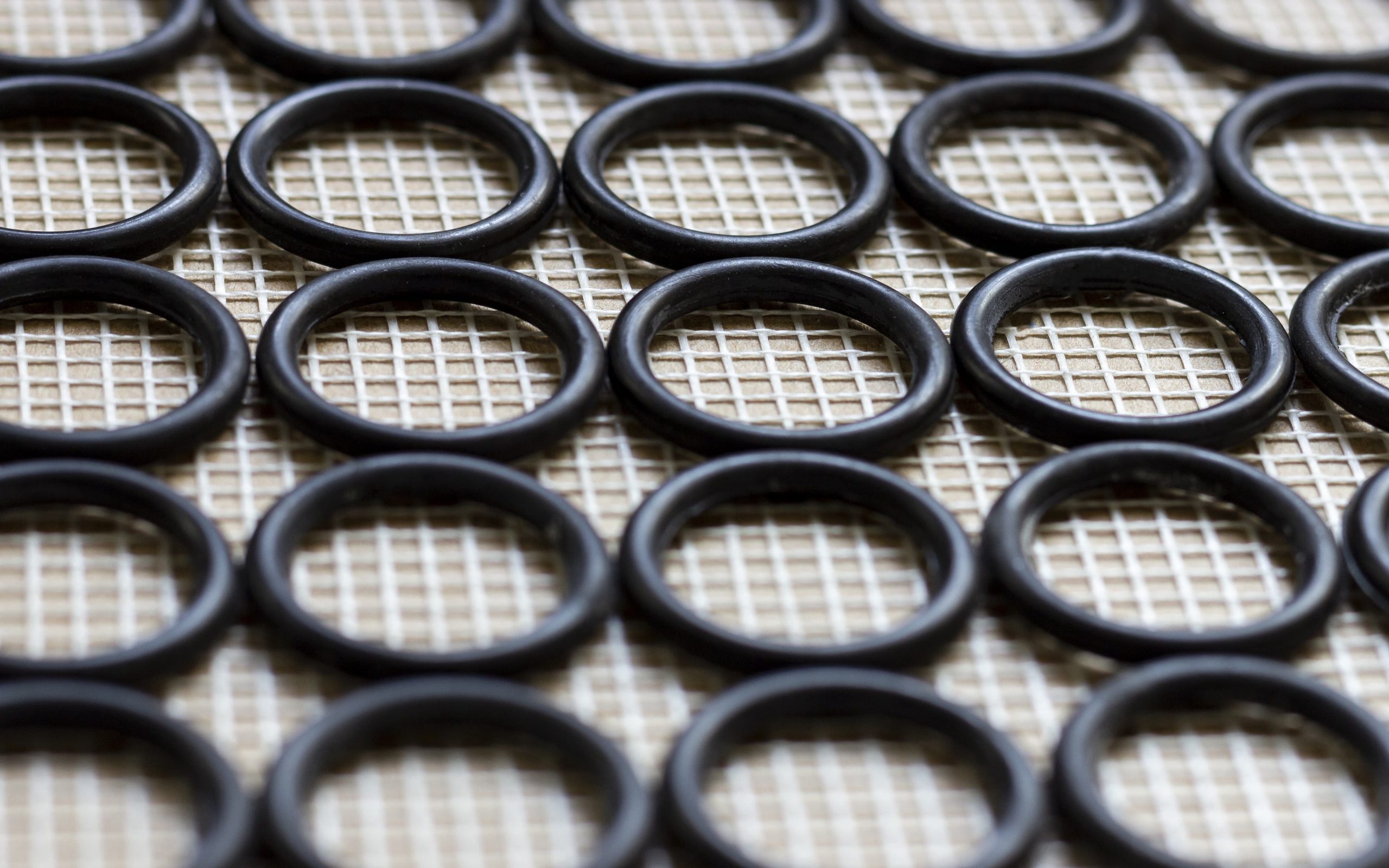
Joints d'étanchéité
Pièces plastiques de précision
- Contexte : Les pièces en plastique de précision sont largement utilisées dans les industries exigeant une grande précision, telles que le secteur médical et l'aérospatiale. L'ébavurage est essentiel dans la fabrication de ces composants, en particulier pour les pièces en plastique de forme complexe ou comportant de nombreuses cavités. Un média d'ébavurage inapproprié peut endommager la surface des pièces en plastique ou affecter leur fonctionnalité.
- Application : La société américaine de dispositifs médicaux Medtronic utilise des billes d'ébarbage en polystyrène pour nettoyer les boîtiers en plastique de ses implants médicaux. Les résultats montrent que ce matériau non abrasif peut éliminer les microbavures tout en préservant l'aspect lisse de la surface du plastique, sans affecter la fonctionnalité et la sécurité de l'implant. Ce procédé permet de réduire la nécessité d'un traitement secondaire et d'améliorer l'efficacité de la chaîne de production. En introduisant ce procédé, Medtronic a augmenté le taux de qualification des implants en plastique d'environ 18% et a raccourci le cycle de production de 12%, ce qui a permis à l'entreprise d'économiser beaucoup de temps et d'argent.
Avantages économiques et protection de l'environnement
Avantages économiques
- Améliorer l'efficacité de la production : L'efficacité élevée des billes d'ébarbage en polystyrène permet de réduire considérablement le temps de traitement et d'améliorer l'efficacité de la production. Par rapport aux méthodes d'ébavurage traditionnelles, l'utilisation de billes d'ébavurage en polystyrène peut augmenter l'efficacité de la production de plus de 40%.
- Réduire les coûts : La longue durée de vie et le faible taux de perte des billes d'ébarbage en polystyrène permettent de réduire les coûts de production des entreprises. Par rapport aux moyens d'ébavurage traditionnels, l'utilisation de billes d'ébavurage en polystyrène peut réduire les coûts de plus de 30%.
Protection de l'environnement
- Non toxique et inoffensif : Les billes d'ébarbage en polystyrène sont non toxiques et ne présentent aucun danger pour l'environnement et la santé humaine. Au cours du processus de production et d'utilisation, aucune substance nocive n'est produite, ce qui répond aux exigences en matière de protection de l'environnement.
- Recyclable : Les billes d'ébarbage en polystyrène peuvent être recyclées, ce qui réduit le gaspillage des ressources et la pollution de l'environnement. Les entreprises peuvent collecter et traiter les billes d'ébarbage usagées, puis les remettre en production, réduisant ainsi les coûts de production et contribuant à la protection de l'environnement.
En tant que nouveau type de plastique de sablage, les billes d'ébarbage en polystyrène ont montré de vastes perspectives d'application dans le domaine de l'usinage de précision grâce à leurs avantages uniques tels que la propreté et l'absence de poussière, l'absence de résidus et l'absence de dommages à la couche de galvanoplastie. Ses bonnes propriétés physiques et chimiques, telles que des particules sphériques uniformes, une densité volumique plus faible, une bonne résistance à la chaleur et à l'eau, renforcent encore ses avantages. Grâce à la présentation de données issues de cas réels d'entreprises, nous pouvons constater les effets remarquables des billes d'ébavurage en polystyrène dans divers domaines. Dans le même temps, il présente également de bons avantages économiques et une bonne protection de l'environnement, apportant ainsi un soutien solide au développement durable des entreprises. Avec les progrès constants de la science et de la technologie et le développement durable de l'industrie, on pense que les billes d'ébavurage en polystyrène seront utilisées dans davantage de domaines et contribueront davantage à promouvoir le développement de la fabrication de précision.
Processus de production et contrôle de la qualité
Processus de production
- Sélection des matières premières
HLH sélectionne du polystyrène de haute qualité comme matière première principale et, après un contrôle rigoureux, s'assure de sa grande pureté, de la distribution uniforme de son poids moléculaire et de ses bonnes propriétés physiques et chimiques. Afin de répondre aux besoins des différents scénarios d'application, certains additifs spéciaux tels que des agents antistatiques, des lubrifiants, etc. peuvent également être ajoutés pour améliorer les performances des billes d'ébavurage.
- Méthode de moulage
Adoptant une technologie avancée de moulage par injection, le polystyrène est chauffé jusqu'à l'état fondu, puis injecté dans un moule de précision, et des billes d'ébarbage sphériques sont formées après refroidissement et solidification. Le processus de moulage par injection permet de garantir que les billes d'ébarbage ont une grande précision dimensionnelle, une forme régulière et une surface lisse, ce qui permet d'améliorer l'effet et l'efficacité de l'ébarbage.
Contrôle de la qualité
- Détection stricte de la taille
Au cours du processus de production, un équipement de mesure de haute précision sera utilisé pour détecter strictement la taille des perles d'ébarbage afin de s'assurer que leur taille se situe dans la fourchette spécifiée. Pour les perles d'ébarbage dont la taille ne répond pas aux exigences, un tri et un traitement seront effectués en temps utile pour garantir la cohérence et la fiabilité du produit.
- Test de résistance
Afin de s'assurer que les billes de lavage ont une résistance et une stabilité suffisantes pendant l'utilisation, des tests de résistance seront effectués. Les méthodes d'essai comprennent des essais de traction, des essais de flexion, etc. pour évaluer la force de traction, la contrainte de flexion et d'autres indicateurs de performance des billes de lavage. Seules les billes d'ébarbage ayant passé le test de résistance peuvent être mises en vente sur le marché, afin de garantir la qualité et la sécurité du produit.
- Vérification des performances antistatiques
Les billes d'ébavurage en polystyrène ayant certaines propriétés antistatiques, une vérification des performances antistatiques est nécessaire. Les méthodes de vérification comprennent des tests de résistivité de surface, des tests de temps de décroissance statique, etc. pour s'assurer que les performances antistatiques des billes d'ébavurage répondent aux exigences. Si les performances antistatiques ne répondent pas aux exigences, des ajustements et des améliorations seront apportés afin d'améliorer les performances antistatiques du produit.
- Système de traçabilité de la qualité
Mettre en place un système complet de traçabilité de la qualité, numéroter et enregistrer chaque lot de billes d'ébarbage en polystyrène, de sorte que lorsque des problèmes de qualité surviennent, il est possible de remonter à temps jusqu'au lien de production, de trouver la cause première du problème et de le résoudre. Le système de traçabilité de la qualité peut améliorer efficacement le niveau de contrôle de la qualité des produits et protéger les droits et les intérêts des utilisateurs.




